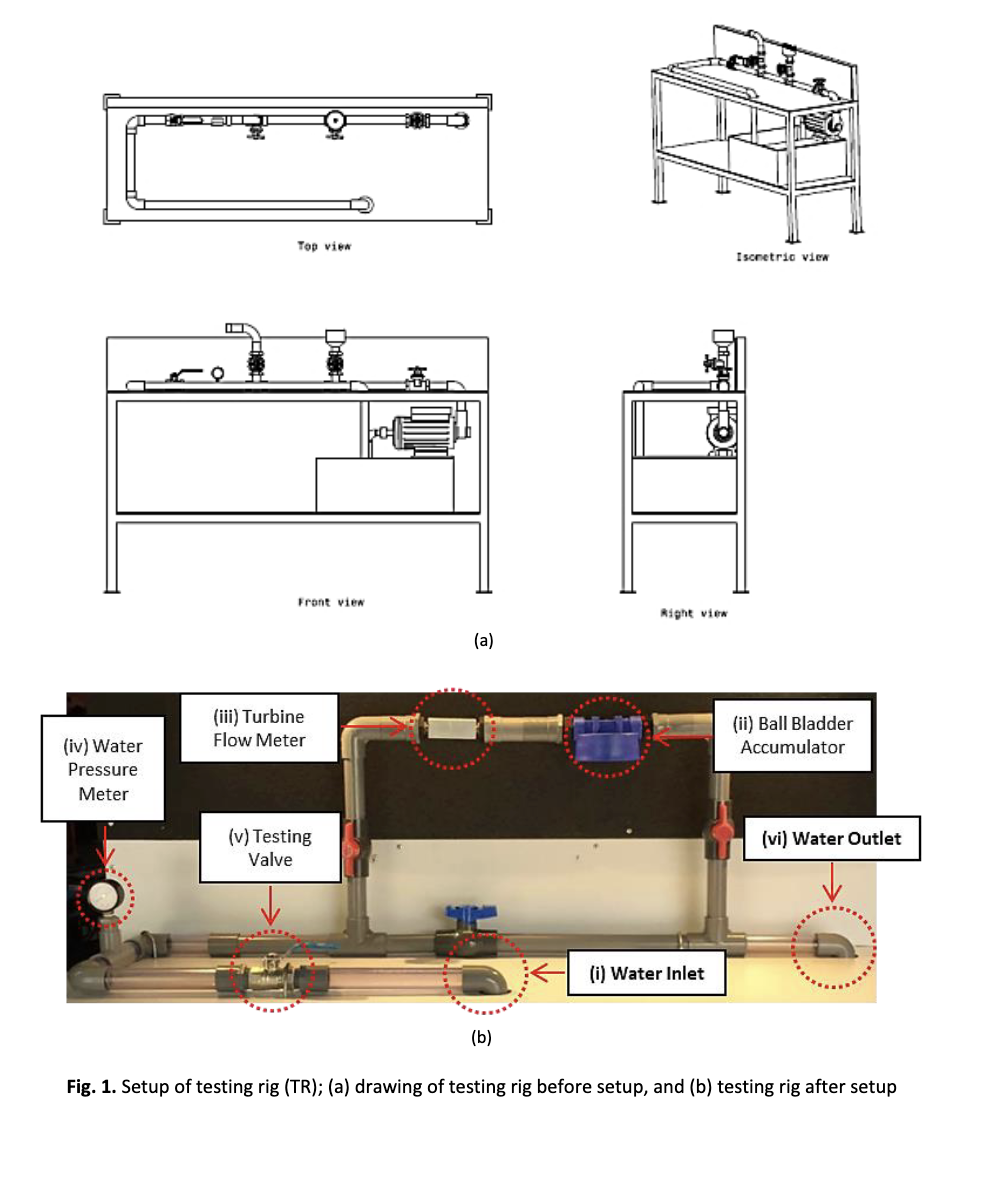Analysis on Effect of Ball Bladder Size during Water Hammer in Domestic Water System
Keywords:
Water hammer, ball bladder accumulator, shock wave, domestic water systemAbstract
Water hammer is a common phenomenon when a home pipe suddenly shuts down. The phenomenon may lead to pump failure, water system fatigue, pipe rupture and contaminated water backflow, and thus produces a loud banging or hammering noise. To prevent this phenomenon, a suitable accumulator is a must. Therefore, the objective of this research is to identify the exact volume of the bladder needed in the accumulator to overcome water hammer in the domestic water system. A ball bladder type of accumulator was chosen due to its flexibility, lightweight and capability to absorb hydraulic shock during the water hammer. The diameter of the ball bladder was 75 mm. There were two parameters for the experiment, namely water pressure during water hammer and the effect of ball bladder size on the hydraulic shock. These parameters were analysed to reduce the effect of water hammer in the future. The experiments were conducted by using DAQami software to understand the behaviour of the shock wave due to water hammer in the presence of a ball bladder. The outcome of analysis showed that the accumulator with four ball bladders with size of 883.57 cm3(2.79 bar), had the slowest time in terms of water pressure increase when the test valve was shut down suddenly. In addition,there was no leakage at the pipe, no water droplets and no noisy sound from the pump when the test valve is shut down immediately or suddenly. Besides, the pressure of the shock wave was reduced from 4.00 bar to 2.79 bar, leading to a reduction of 1.21 bar (30%). This research revealed that the appropriate size of ball bladder for the domestic water system to prevent water hammer was 1523.33 cm3, which was approximated to seven ball bladders
Downloads


























